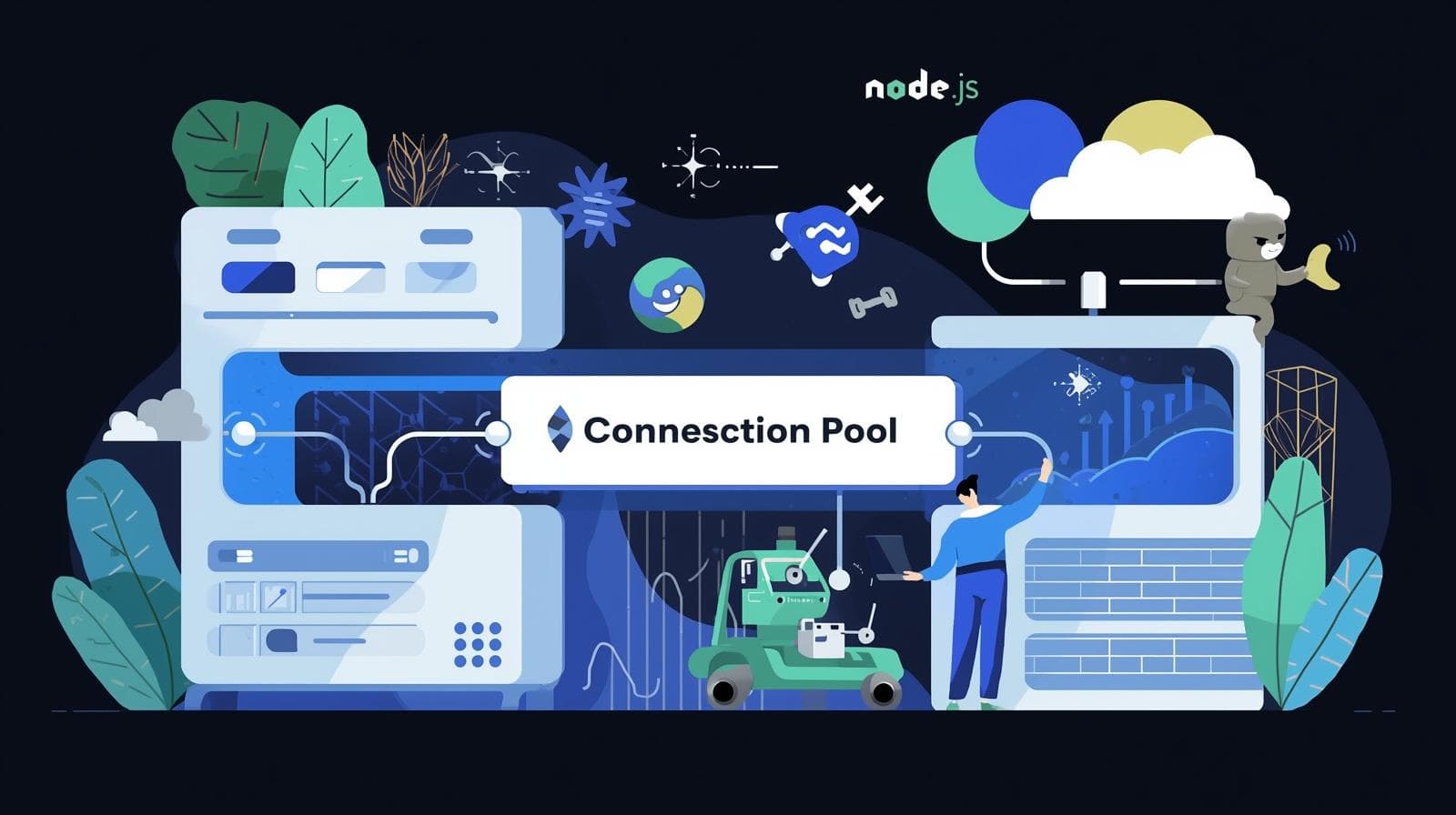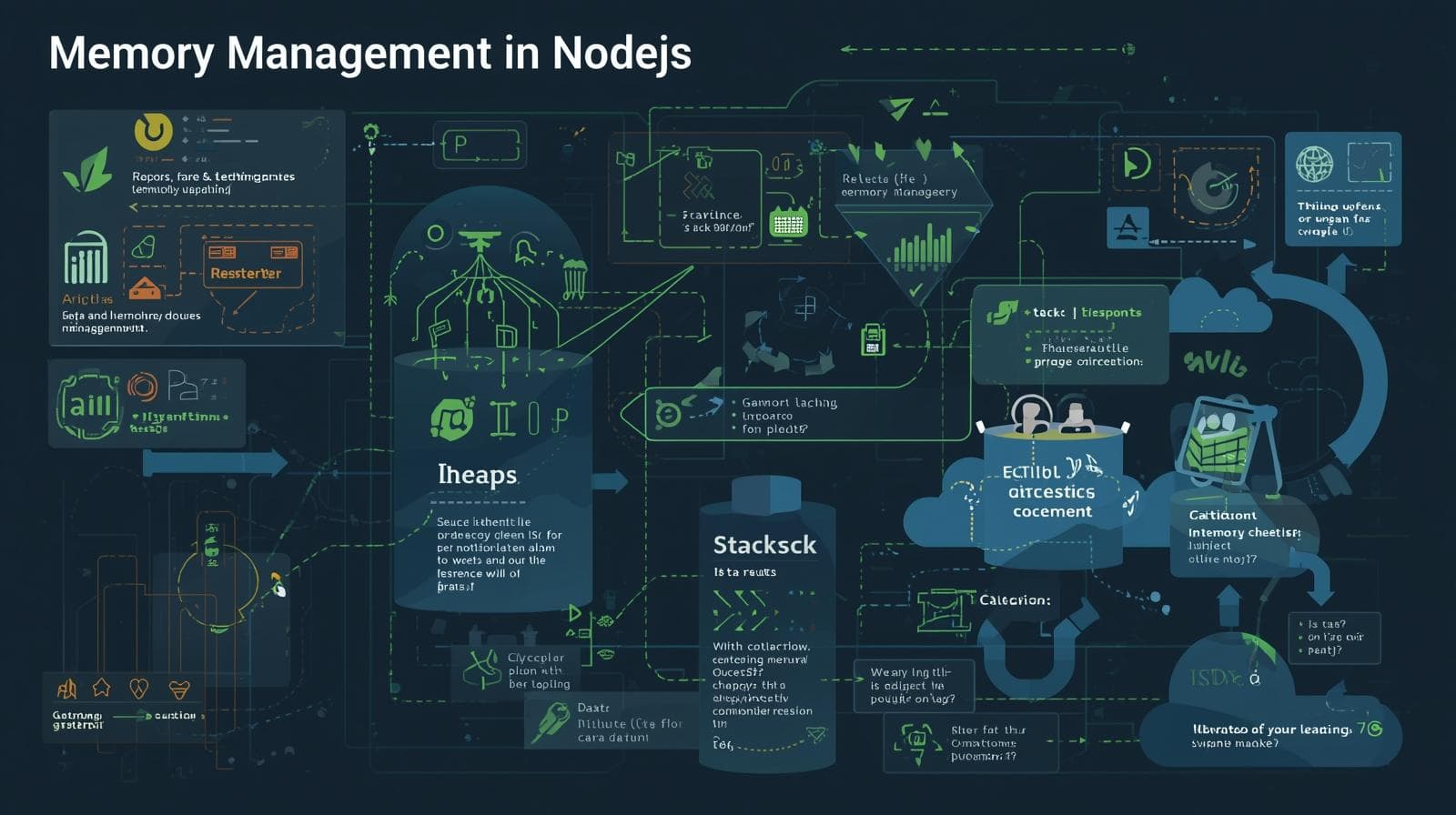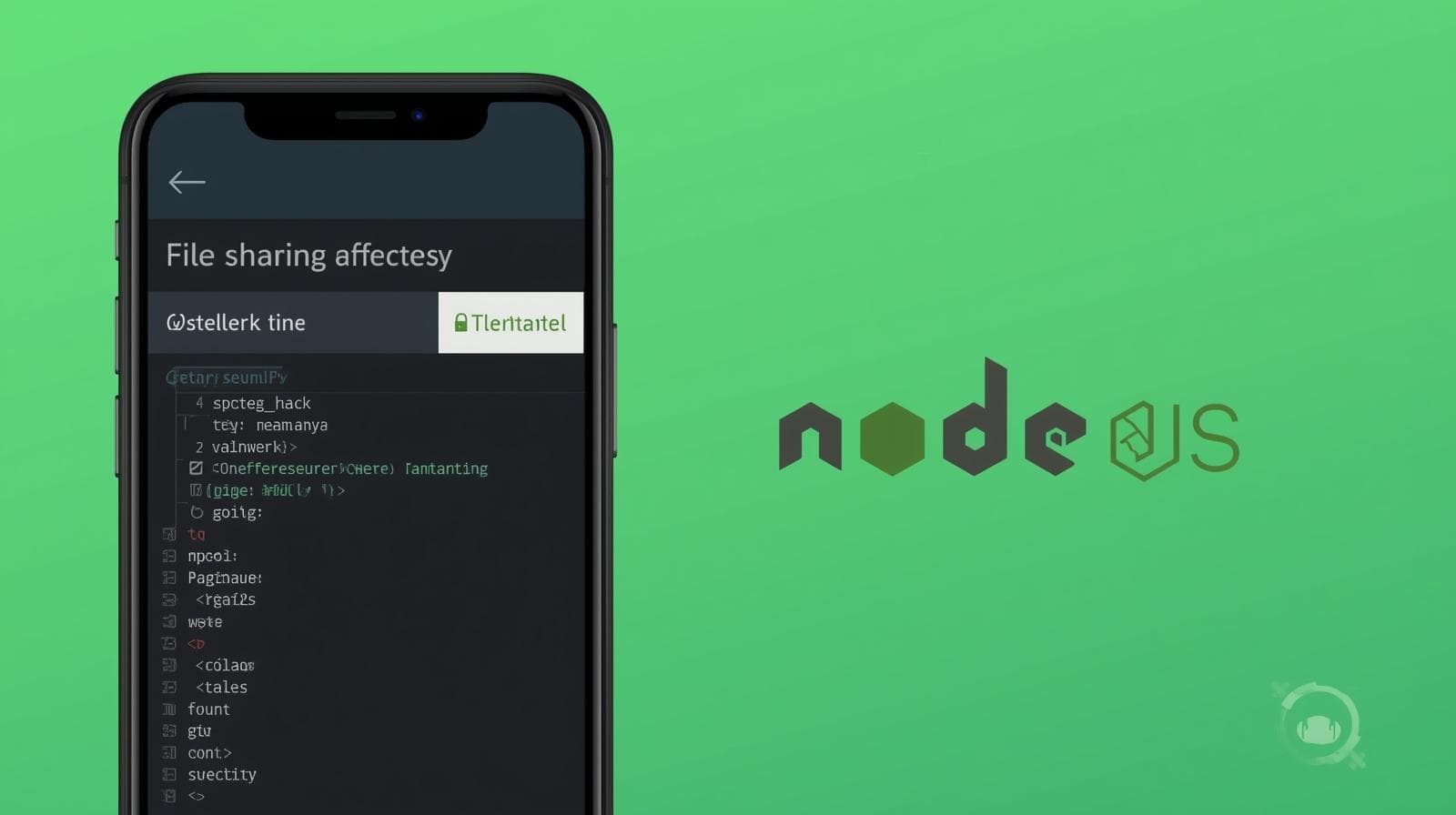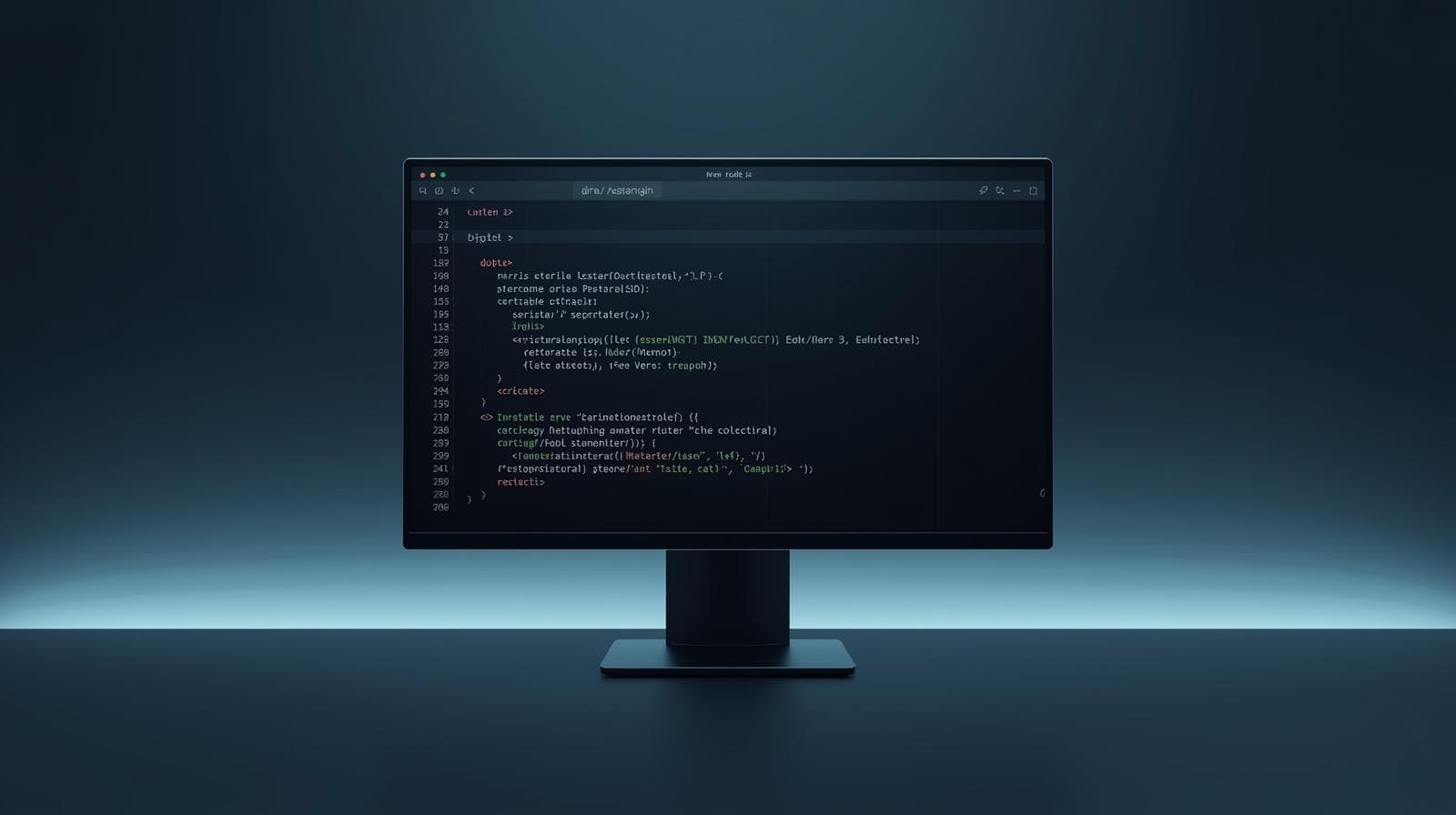Master Integration Testing with Jest: A 2025 Guide for Robust Web Apps

Demystify Integration Testing with Jest. Learn definitions, see step-by-step examples with Node.js & Express, explore best practices, and build unbreakable software.

Master Integration Testing with Jest: A 2025 Guide for Robust Web Apps
Beyond Unit Tests: Mastering Integration Testing with Jest for Rock-Solid Applications
You've written your functions. You've unit-tested them in isolation. addUser function? Check. validateEmail helper? Check. Everything is green. You deploy with confidence, only to get a panicked message an hour later: "The sign-up button is broken! Users can't create accounts!"
What happened? Your units were perfect, but they failed to work together. The addUser function expected a slightly different data structure than what the validateEmail function was outputting. This, my friends, is the classic pitfall of relying solely on unit tests. The real world of software is a complex web of interconnected parts, and that's precisely where Integration Testing comes in.
In this comprehensive guide, we're going to move beyond the basics and dive deep into the world of integration testing using one of the most beloved testing frameworks: Jest. We'll demystify what it is, why it's non-negotiable for professional development, and how you can implement it effectively in your own projects.
To learn professional software development courses such as Python Programming, Full Stack Development, and MERN Stack, visit and enroll today at codercrafter.in.
What is Integration Testing? Let's Get the Definitions Right
Before we write a single line of code, let's solidify our understanding. It's easy to get confused between the different testing levels.
Unit Testing vs. Integration Testing vs. End-to-End (E2E) Testing
Think of building a car:
Unit Testing: You test each component individually. The spark plug works. The fuel pump works. The piston moves up and down. Each test is in complete isolation, often using "mocks" or "stubs" for any external dependencies.
Integration Testing: Now, you connect the spark plug to the engine block and test if they work together. You connect the fuel pump to the engine and see if fuel flows correctly. You are testing the interaction between two or more integrated units or modules.
End-to-End (E2E) Testing: This is the full road test. You get in the car, turn the key, press the accelerator, and see if the car moves forward, the headlights turn on, and the windshield wipers work. It tests the entire application flow from start to finish, just like a real user.
The Core Goal of Integration Testing: To uncover faults in the interaction between integrated modules. It answers the question: "Now that I know all the parts work alone, do they work correctly when I plug them together?"
Why Jest is a Fantastic Choice for Integration Testing
Jest is widely known as a premier unit testing framework for JavaScript, but it's so much more. Its feature set makes it exceptionally well-suited for integration testing too:
Zero-Configuration: For most projects, it works out of the box.
Superfast Parallel Execution: It runs tests in parallel, which is crucial as your integration test suite grows.
Powerful Mocking Library: Jest provides a robust API for mocking functions, modules, and even entire APIs. This is vital for isolating the "slice" of the application you are testing.
Great Developer Experience: Features like snapshot testing, built-in code coverage reports (
--coverage), and a clear, descriptive error output make the testing process smooth.
Setting the Stage: Our Testing Playground
Enough theory; let's get our hands dirty. We'll create a simple but realistic REST API for a "Task Manager" using Node.js, Express, and a MongoDB database. This will give us a perfect playground for integration tests.
Project Setup
First, let's initialize our project and install dependencies.
bash
mkdir task-manager-api
cd task-manager-api
npm init -y
npm install express mongoose
npm install --save-dev jest supertest mongodb-memory-serverexpress: Our web framework.mongoose: ODM for MongoDB.jest: Our testing framework.supertest: A fantastic library for testing Node.js HTTP servers. It allows us to make HTTP requests to our Express app without having to start a server manually.mongodb-memory-server: This is the magic ingredient. It spins up a real MongoDB database in memory for our tests. This means our tests are fast, self-contained, and don't interfere with our development or production databases.
The Application Code
Let's create a simple application structure.
app.js
javascript
const express = require('express');
const mongoose = require('mongoose');
const taskRoutes = require('./routes/tasks');
const app = express();
app.use(express.json());
app.use('/api/tasks', taskRoutes);
// Basic error handling middleware
app.use((err, req, res, next) => {
res.status(500).json({ message: err.message });
});
module.exports = app;server.js
javascript
const app = require('./app');
const mongoose = require('mongoose');
const PORT = process.env.PORT || 5000;
const MONGO_URI = process.env.MONGO_URI || 'mongodb://localhost:27017/taskmanager';
mongoose.connect(MONGO_URI)
.then(() => {
console.log('Connected to MongoDB');
app.listen(PORT, () => console.log(`Server running on port ${PORT}`));
})
.catch(err => console.log(err));models/Task.js
javascript
const mongoose = require('mongoose');
const taskSchema = new mongoose.Schema({
title: {
type: String,
required: true,
trim: true
},
completed: {
type: Boolean,
default: false
}
}, {
timestamps: true
});
module.exports = mongoose.model('Task', taskSchema);routes/tasks.js
javascript
const express = require('express');
const router = express.Router();
const Task = require('../models/Task');
// GET /api/tasks - Get all tasks
router.get('/', async (req, res, next) => {
try {
const tasks = await Task.find();
res.json(tasks);
} catch (err) {
next(err);
}
});
// POST /api/tasks - Create a new task
router.post('/', async (req, res, next) => {
try {
const task = new Task(req.body);
const savedTask = await task.save();
res.status(201).json(savedTask);
} catch (err) {
next(err);
}
});
// GET /api/tasks/:id - Get a single task by ID
router.get('/:id', async (req, res, next) => {
try {
const task = await Task.findById(req.params.id);
if (!task) {
return res.status(404).json({ message: 'Task not found' });
}
res.json(task);
} catch (err) {
next(err);
}
});
module.exports = router;Writing Our First Integration Test
We'll test the POST /api/tasks endpoint. This test will involve:
Our Express server (the route).
The Mongoose model (the business logic/data validation).
The MongoDB in-memory server (the database).
This is a true integration test for the "Create Task" feature.
tests/task.integration.test.js
javascript
const request = require('supertest');
const mongoose = require('mongoose');
const { MongoMemoryServer } = require('mongodb-memory-server');
const app = require('../app'); // Our Express app
describe('Task API Integration Tests', () => {
let mongoServer;
// Lifecycle Hooks for Test Setup and Teardown
beforeAll(async () => {
// Spin up a new in-memory MongoDB server before all tests
mongoServer = await MongoMemoryServer.create();
const mongoUri = mongoServer.getUri();
await mongoose.connect(mongoUri);
});
afterAll(async () => {
// Disconnect and stop the DB server after all tests
await mongoose.disconnect();
await mongoServer.stop();
});
beforeEach(async () => {
// Clear the database before each test to ensure isolation
await mongoose.connection.db.dropDatabase();
});
describe('POST /api/tasks', () => {
it('should create a new task successfully', async () => {
const newTask = { title: 'Learn Integration Testing with Jest' };
const response = await request(app)
.post('/api/tasks')
.send(newTask)
.expect(201) // Asserting the HTTP status code
.expect('Content-Type', /json/); // Asserting the response header
// Assertions on the response body
expect(response.body).toHaveProperty('_id');
expect(response.body.title).toBe(newTask.title);
expect(response.body.completed).toBe(false); // Testing default value
expect(response.body).toHaveProperty('createdAt');
expect(response.body).toHaveProperty('updatedAt');
});
it('should fail to create a task without a title', async () => {
const response = await request(app)
.post('/api/tasks')
.send({}) // Sending an empty body
.expect(500); // Our error middleware sends a 500 for unhandled errors (like Mongoose validation)
// In a real app, you'd likely handle this with a 400. This test shows how to test for failures.
expect(response.body).toHaveProperty('message');
});
});
});Let's Break Down What Happened
beforeAll: This hook runs once before any test in this suite. It starts the in-memory MongoDB and connects Mongoose to it. This ensures we have a fresh, clean database for our test run.afterAll: This cleans up everything after all tests are done, disconnecting and stopping the database.beforeEach: This is critical. It clears the entire database before each test. This ensures that tests are completely isolated from one another. The state fromit('should create...')does not affectit('should fail...').request(app):supertesttakes our Expressappobject and allows us to make HTTP requests against it directly, without needing to callapp.listen().Assertions: We use Jest's
expectalong withsupertest's built-in assertions (like.expect(201)) to verify both the HTTP response and the data shape returned from our API.
Leveling Up: Testing a More Complex Flow
Let's add a test for fetching all tasks. This will demonstrate testing the interaction between the GET /api/tasks route and the database.
Add to tests/task.integration.test.js inside the main describe block:
javascript
describe('GET /api/tasks', () => {
it('should return an empty array initially', async () => {
const response = await request(app)
.get('/api/tasks')
.expect(200);
expect(response.body).toEqual([]);
});
it('should return all tasks in the database', async () => {
// First, seed the database with some tasks
const tasksToSeed = [
{ title: 'Task One' },
{ title: 'Task Two', completed: true }
];
await request(app).post('/api/tasks').send(tasksToSeed[0]);
await request(app).post('/api/tasks').send(tasksToSeed[1]);
// Then, query the GET endpoint
const response = await request(app)
.get('/api/tasks')
.expect(200);
// Assertions
expect(Array.isArray(response.body)).toBe(true);
expect(response.body).toHaveLength(2);
// We can check for the presence of our seeded data
const titles = response.body.map(task => task.title);
expect(titles).toContain('Task One');
expect(titles).toContain('Task Two');
});
});This test is powerful. It doesn't just test the GET endpoint in isolation; it tests the entire flow of creating data via the POST endpoint and then retrieving it via the GET endpoint. This is the essence of integration testing.
Real-World Use Cases & Best Practices
Integration tests are versatile. Here’s where they shine and how to do them right.
Common Real-World Scenarios:
API Endpoint Testing: As demonstrated, testing your REST or GraphQL endpoints, ensuring the request/response cycle, authentication, and data persistence work together.
Database Interactions: Testing your ORM/ODM (like Mongoose, Sequelize) models against a real database to ensure your queries, validations, and hooks work as expected.
Service Layer Integration: Testing a service function that uses multiple models or calls an external API (which you would mock).
Authentication Flows: Testing the complete flow of user login, token generation, and accessing a protected route.
Best Practices for Sustainable Integration Tests:
Keep Tests Isolated: This is the golden rule. Each test must be independent. Use
beforeEach/afterEachto reset the state of the database. A test should never depend on the side effects of another test.Use a Test Database: Never run integration tests against your development or production database. The
mongodb-memory-serveris perfect for this. For SQL databases, tools likesqlite3(in:memory:mode) or libraries that can create isolated schemas are common.Mock Judiciously: The goal is to test integration, so avoid mocking your core modules (like your database model). However, you should mock external services (like sending an email via SendGrid or fetching data from a third-party API). Jest's
jest.mock()function is perfect for this.Focus on Behavior, Not Implementation: Test what the feature does (e.g., "it creates a task"), not how it does it. This makes your tests more resilient to refactoring.
Tag Your Tests: As your suite grows, you'll have unit, integration, and e2e tests. Use Jest's
--testNamePatternor module-level docblocks to categorize them, so you can run them separately. (e.g.,npm run test:integration).
Building these testing habits is a core tenet of professional software engineering. To learn professional software development courses such as Python Programming, Full Stack Development, and MERN Stack, which all emphasize robust testing strategies, visit and enroll today at codercrafter.in.
Frequently Asked Questions (FAQs)
Q1: My integration tests are slow. What can I do?
A: This is common. Ensure you're using an in-memory database. Run tests in parallel (Jest does this by default). Also, be strategic about what you test; not every possible scenario needs an integration test—some are better as faster unit tests.
Q2: How many integration tests should I write?
A: There's no magic number. Focus on testing critical user journeys and paths where different modules of your system interact. A good goal is to have enough coverage on these integration points to catch the majority of interaction bugs.
Q3: Can I use Jest for End-to-End (E2E) testing?
A: While Jest is primarily for unit and integration tests, it can be used as the test runner for E2E testing frameworks like Playwright or Cypress. They handle the browser automation, and Jest provides the structure for writing test cases and assertions.
Q4: What's the difference between supertest and just using axios or fetch in my tests?
A: supertest is designed specifically for testing Node.js HTTP servers. It doesn't require your server to be running on a port; it can directly handle the Express app object, making it simpler and more integrated. Using axios would require you to start and stop your server manually in your test hooks.
Conclusion: Building Confidence, One Integration Test at a Time
Integration testing is the crucial bridge between the isolated safety of unit tests and the broad, user-centric validation of E2E tests. By testing how the pieces of your application fit together, you catch a class of bugs that unit tests simply cannot.
Jest, with its powerful API and excellent ecosystem (including tools like supertest and mongodb-memory-server), provides a first-class experience for writing these tests. It allows you to create a fast, reliable, and isolated testing environment that mirrors your production setup as closely as possible.
Start small. Add an integration test for your next new API endpoint. Experience the confidence it gives you when refactoring code or adding new features. Soon, it will become an indispensable part of your development workflow, ensuring that the software you build isn't just a collection of working parts, but a cohesive, reliable, and robust whole.
Ready to build and test real-world applications from the ground up? To learn professional software development courses such as Python Programming, Full Stack Development, and MERN Stack, visit and enroll today at codercrafter.in. We'll guide you through the entire journey, from writing your first "Hello World" to deploying and testing complex, full-stack applications.









